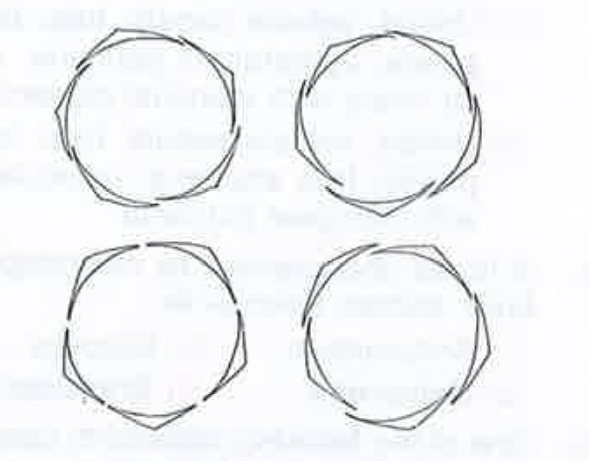What type of aestivation is seen in a papilionaceous corolla?
To answer the question about the type of aestivation seen in a papilionaceous corolla, we can follow these steps:
1. Understand the Terms:
- Corolla: This refers to the collective group of petals in a flower.
- Aestivation: This is the arrangement of petals and sepals in a flower bud before it opens.
2. Identify the Type of Corolla:
- A papilionaceous corolla is a specific type of corolla found in the family Fabaceae (legumes).
3. Examine the Structure of Papilionaceous Corolla:
- A papilionaceous corolla consists of five petals:
- One large petal called the standard or vexillum.
- Two lateral petals known as wings.
- Two smaller petals called keels.
4. Determine the Aestivation Type:
- In a papilionaceous corolla, the arrangement of these petals is such that the standard petal overlaps the wings, and the wings overlap the keels. This specific arrangement is known as vexillary aestivation.
5. Conclude the Answer:
- Therefore, the type of aestivation seen in a papilionaceous corolla is vexillary aestivation.
Final Answer:
The type of aestivation seen in a papilionaceous corolla is vexillary aestivation.
---
- Corolla: This refers to the collective group of petals in a flower.
- Aestivation: This is the arrangement of petals and sepals in a flower bud before it opens.
- A papilionaceous corolla is a specific type of corolla found in the family Fabaceae (legumes).
- A papilionaceous corolla consists of five petals:
- One large petal called the standard or vexillum.
- Two lateral petals known as wings.
- Two smaller petals called keels.
- In a papilionaceous corolla, the arrangement of these petals is such that the standard petal overlaps the wings, and the wings overlap the keels. This specific arrangement is known as vexillary aestivation.
- Therefore, the type of aestivation seen in a papilionaceous corolla is vexillary aestivation.
The type of aestivation seen in a papilionaceous corolla is vexillary aestivation.
Topper's Solved these Questions
- MORPHOLOGY OF FLOWERING PLANTS BOOK - ICSECHAPTER - MORPHOLOGY OF FLOWERING PLANTS EXERCISE - REVIEW QUESTIONS (V. LONG ANSWER TYPE QUESTIONS)
6 Videos
- MORPHOLOGY OF FLOWERING PLANTS BOOK - ICSECHAPTER - MORPHOLOGY OF FLOWERING PLANTS EXERCISE - NCERT TEXTBOOK QUESTIONS WITH SOLUTIONS
25 Videos
- MORPHOLOGY OF FLOWERING PLANTS BOOK - ICSECHAPTER - MORPHOLOGY OF FLOWERING PLANTS EXERCISE - REVIEW QUESTIONS (III. DIFFERENTIATE BETWEEN THE FOLLOWING)
18 Videos
- MORPHOLOGY AND ANATOMY OF DIFFERENT SYSTEM OF COCKROACH BOOK - ICSECHAPTER - MORPHOLOGY AND ANATOMY OF DIFFERENT SYSTEM OF COCKROACH EXERCISE - Long Answer type Questions
6 Videos
- NEURAL CONTROL AND CO-ORDINATION BOOK - ICSECHAPTER - NEURAL CONTROL AND CO-ORDINATION EXERCISE - NCERT EXERCISES WITH ANSWER (DIFFERENTIATE BETWEEN)
11 Videos
Similar Questions
Knowledge Check
ZZ/ZW type of sex determination is seen in
AplatypusBsnailsCcockroachDpeacock
What type of placentation of seen in sweet pea
View SolutionWhat type of movement is seen in Amoeba?
View SolutionWhich type of aestivation is shown in the diagram ?

View SolutionWhat type of placentation of seen in family leguminosae
View SolutionZZ/ZW type of sex determination is seen in
View SolutionZZ/ZW type of sex determination is seen in
View SolutionDefine the aestivation
View Solution
